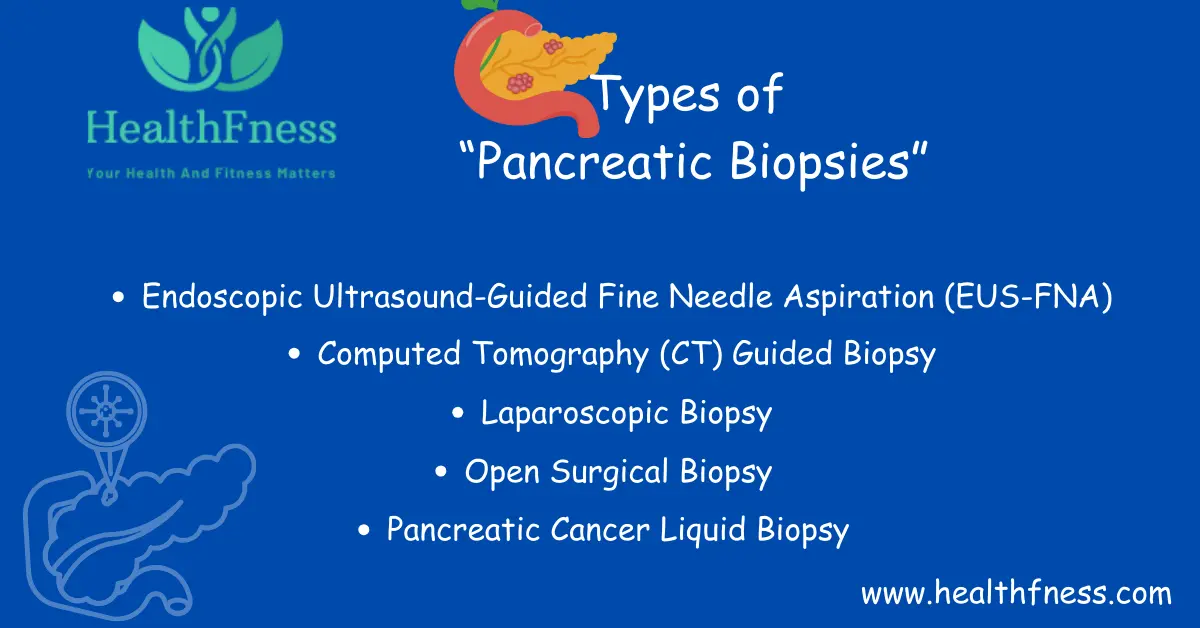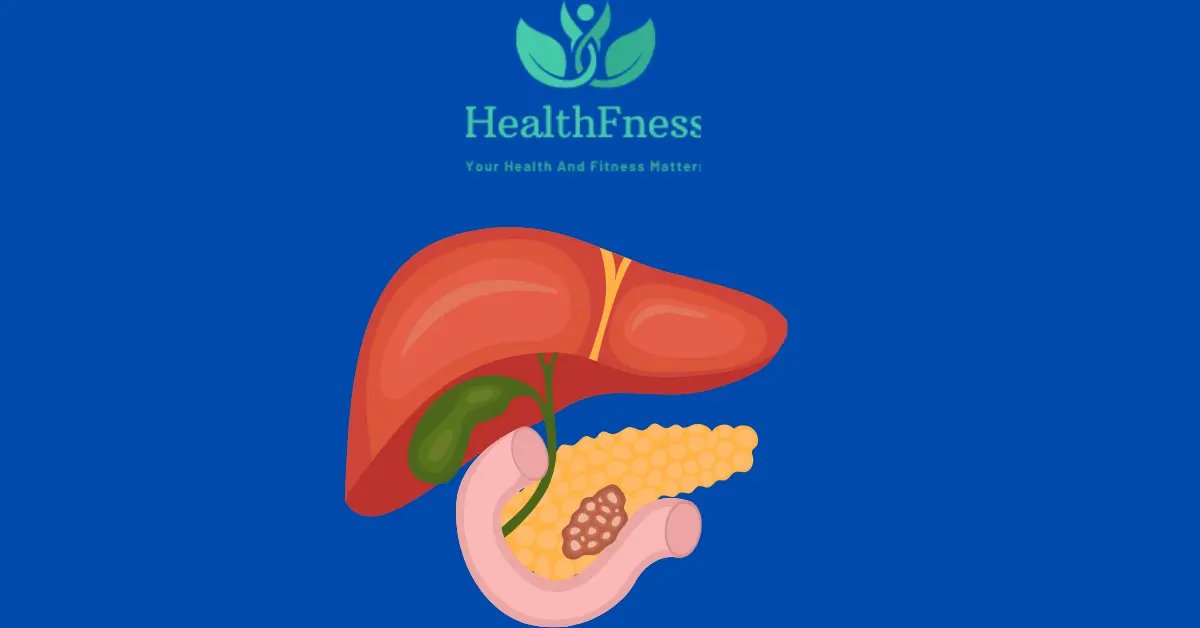Before discussing Pancreatic Biopsy must know what is pancreatitis. Inflammation of the pancreas results in pancreatitis, a medical disorder that can be extremely painful and lead to additional health issues. The pancreas is a gland in the belly that creates hormones to control blood sugar levels and enzymes to help in digesting food🤢.
What is Pancreatic Biopsy?
A pancreatic biopsy is a medical procedure that involves obtaining a sample of tissue from the pancreas for diagnostic purposes. Although it can provide valuable information about the condition of the organ, there are potential complications🥴 associated with this procedure.
Types of Pancreatic Biopsies
There are several types of Pancreatic Biopsy that are done according to the need of the patient:
Endoscopic Ultrasound-Guided Fine Needle Aspiration (EUS-FNA)
This procedure uses an endoscope that is equipped with an ultrasound probe and a small needle. To access the pancreas, the endoscope is introduced through the mouth into the duodenum and stomach. The pancreatic suspicious area is located with an ultrasonic probe, and a tissue sample is taken with a needle for analysis.
Computed Tomography (CT) Guided Biopsy
This procedure uses a CT scan to direct a needle to a suspected pancreatic tumor. To collect a tissue sample, the needle is injected into the pancreas through the skin.
Laparoscopic Biopsy
This procedure uses a laparoscope, a little tube with a camera on the end of it. To access the pancreas, a tiny abdominal incision is used to introduce the laparoscope. Afterward, a little tissue sample is taken out for analysis🫠.

Open Surgical Biopsy
An abdominal incision is made using the open surgical biopsy method in order to gain access to the pancreas. Next, a tissue sample is taken out for analysis.
Pancreatic Cancer Liquid Biopsy
A medical procedure known as a pancreatic cancer liquid biopsy scans a patient’s blood for tumor-specific genetic material. This test can be used to identify pancreatic cancer, track its development, and choose the most effective treatments for patients.
You May Like To Read: Acute Pancreatitis ICD-10: Types, Causes, Prevention
Pancreatic Biopsy Procedure
There are several steps included in Pancreatic Biopsy:
Preparation
To help ensure the stomach and intestines are empty, the patient will be told to fast for a specific amount of time before the biopsy, typically 8 to 12 hours. Before the treatment, the patient might also need to temporarily cease taking several drugs, such as blood thinners.
Anesthesia
To relax and reduce pain during the biopsy, the patient could receive sedation or local anesthetic.
Imaging
Ultrasound, CT, or MRI imaging equipment is frequently used to guide the biopsy. The imaging aids in locating the pancreatic anomaly and directing the biopsy needle in the right place.
Biopsy
The physician will take a small sample of pancreatic tissue using a needle. Several samples may be taken in various circumstances. The biopsy sample is delivered to a lab for evaluation.
Pancreatic Biopsy Complications
The procedure is generally considered safe, but there are some pancreatic biopsy risks that can occur, including:
Bleeding
If the biopsy needle unintentionally punctures a blood artery during the process, bleeding may happen during or after the biopsy. While minor bleeding is frequent and usually resolves on its own, more serious bleeding may necessitate further medical attention.
Infection😷
There is a risk of infection whenever the skin is broken. Following adequate sterilizing protocols and taking antibiotics before the treatment, particularly for patients who are at increased risk of infection, can reduce the chance of infection.

Organ damage
In a small percentage of cases, the biopsy needle may harm neighboring organs such as the liver, spleen, or stomach.
Reaction
Some patients, particularly those undergoing a CT-guided pancreatic biopsy, may experience an allergic reaction to the contrast material utilized in these procedures.
You May Like To Read: Chronic Pancreatitis ICD 10: Types, Causes, and Prevention
Pancrease Biopsy Recovery Time
The type of biopsy done, the patient’s general health and any potential problems can all affect how long it takes to recover from a pancreas biopsy. It is typical to feel some discomfort following the biopsy, such as soreness and swelling in the region where the sample was obtained.
FAQS:
Is a pancreatic biopsy painful?
A pancreatic biopsy can be uncomfortable, but the amount of pain can vary depending on several factors, such as the type of biopsy performed, the individual's pain tolerance, and the skill of the medical professional performing the procedure.
How long does a pancreatic biopsy take?
The duration of a pancreatic biopsy procedure can vary depending on the type of biopsy being performed and the complexity of the case. Generally, a pancreatic biopsy takes about 30 minutes to one hour to complete.
Do you need a biopsy to confirm pancreatic cancer?
A biopsy is the most definitive way to confirm a diagnosis of pancreatic cancer. During a biopsy, a small sample of tissue is removed from the pancreas and examined under a microscope to detect any cancerous cells.
What is a pancreatic biopsy?
A pancreatic biopsy is a scientific system used to accumulate tissue samples from the pancreas for examination underneath a microscope. It facilitates in diagnosing diverse pancreatic conditions along with cancer, pancreatitis, and cysts.
Who needs a pancreatic biopsy?
A pancreatic biopsy can be endorsed through a healthcare issuer if there are abnormalities detected in imaging checks which include CT scans, MRIs, or ultrasound, or if there are signs suggestive of pancreatic diseases.
What are the different types of pancreatic biopsies?
There are numerous styles of pancreatic biopsies, along with satisfactory-needle aspiration biopsy (FNA), core needle biopsy, and endoscopic ultrasound-guided biopsy (EUS). Each method has its own blessings and may be selected based on the particular situations of the patient.
Are there any risks associated with pancreatic biopsy?
Like any clinical technique, pancreatic biopsy includes sure dangers, which includes bleeding, infection, and harm to surrounding organs. However, these dangers are especially low and are typically outweighed by means of the advantages of obtaining an correct prognosis.
How long does it take to get the results of a pancreatic biopsy?
Conclusion
In summary, a pancreatic biopsy is a diagnostic operation performed to acquire a tiny sample of pancreatic tissue for additional testing. The process can be carried out using a variety of techniques, such as surgical biopsy, core needle biopsy, and fine-needle aspiration biopsy. The size, location, and general health of the patient all influence the sort of biopsy that is performed.

Dr. Mark Jenkins, MD - General Physician (California, USA)
Dr. Mark Jenkins is a board-certified general physician based in the United States, specializing in preventive medicine, nutrition, and lifestyle health. With years of clinical experience in primary care, he is dedicated to helping patients and readers alike make informed, science-based decisions about their well-being.
As a trusted medical reviewer and contributor to Healthfness.com, Dr. Jenkins ensures that all health content meets the highest standards of accuracy, safety, and evidence-based medicine. His expertise bridges modern medical science with practical, everyday wellness strategies, making complex topics approachable for all audiences.
Outside the clinic, Dr. Jenkins is passionate about living the healthy lifestyle he teaches. He enjoys hiking with his dog, experimenting with vegetarian cooking, and exploring the latest health research. He believes that small, consistent lifestyle changes lead to lasting health improvements, and he aims to inspire readers to take proactive steps toward a healthier, happier life.
Explore more of Dr. Jenkins’ evidence-based insights at Healthfness.com



